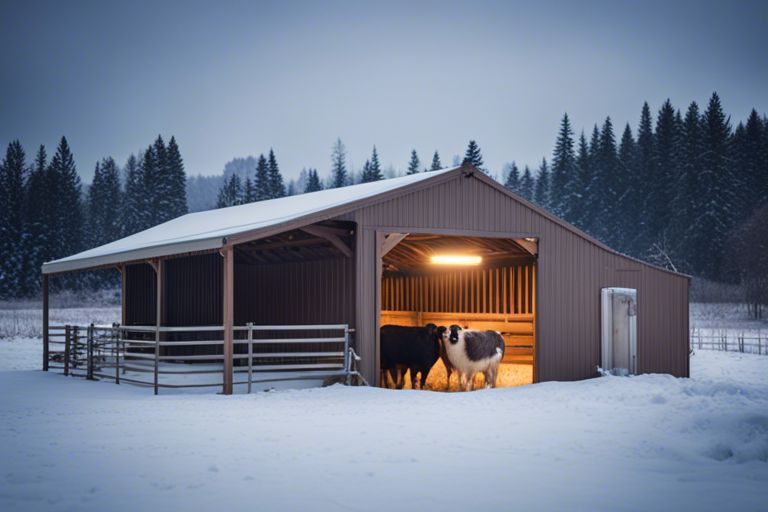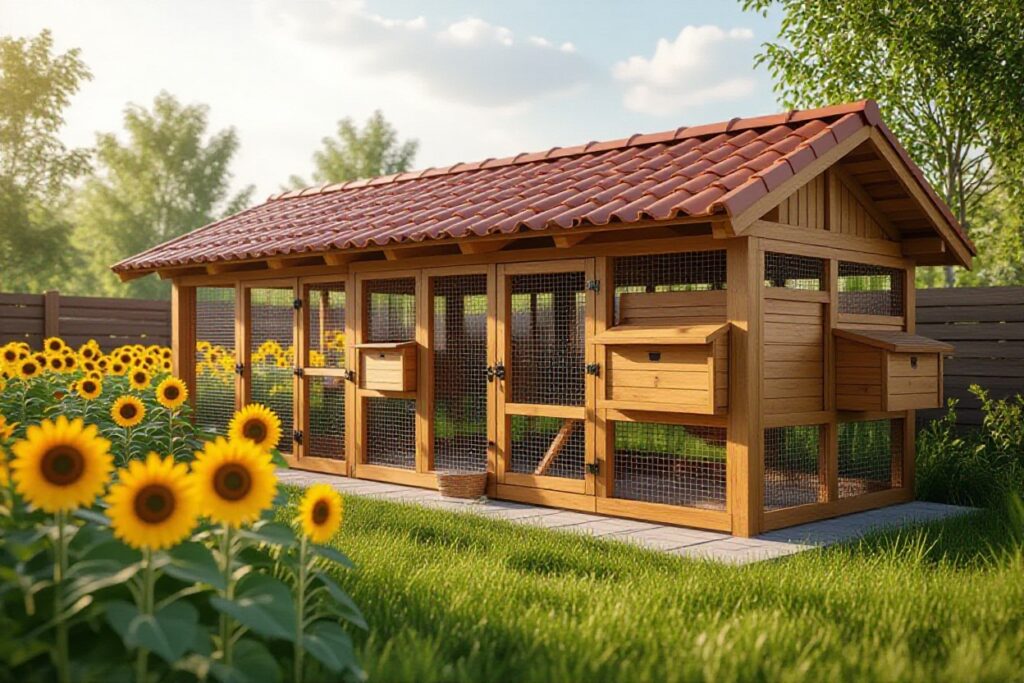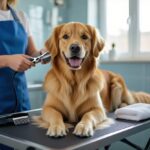When constructing a livestock shelter, it is important to avoid common mistakes that could compromise the safety and well-being of your animals. From inadequate ventilation to improper insulation, there are key considerations to keep in mind to ensure a successful and functional shelter for your livestock. By understanding these mistakes and taking necessary precautions, you can create a sturdy and comfortable environment for your animals to thrive in.
Assessing Environmental Considerations
Ignoring Climate Factors
Before breaking ground on your livestock shelter, it’s crucial to consider the climate factors specific to your region. Ignoring these factors could lead to potential issues such as inadequate insulation against extreme temperatures, poor ventilation that impacts air quality, or insufficient protection from harsh weather conditions.
- Assess the average temperatures and precipitation levels throughout the year.
- Consider the prevailing wind patterns and how they might affect the shelter.
- Take into account the potential for natural disasters like floods or hurricanes in your area.
Recognizing the importance of climate factors in your shelter design will help ensure the well-being and comfort of your livestock, ultimately leading to healthier and more productive animals.
Overlooking Site Selection Criteria
For a successful livestock shelter construction project, overlooking site selection criteria can be a costly mistake. The location of your shelter plays a critical role in its functionality and the health of your animals. Selection of a site that is prone to flooding, lacks proper drainage, or is at risk of soil erosion can result in significant challenges down the line.
When choosing a site for your livestock shelter, consider factors such as topography, soil quality, proximity to water sources, and accessibility for feeding and maintenance activities. Conducting a thorough site analysis before starting construction will help you avoid potential pitfalls and optimize the efficiency of your shelter.

Design and Material Blunders
Choosing Inappropriate Materials
To ensure the durability and longevity of your livestock shelter, it is crucial to select materials that are suitable for the local climate and the specific needs of your animals. Poor choices in materials can lead to frequent repairs and maintenance, ultimately costing you time and money in the long run. Always opt for high-quality, weather-resistant materials that are easy to clean and maintain.
Neglecting Ventilation and Insulation
Inappropriate ventilation and insulation in a livestock shelter can have serious consequences on the health and well-being of your animals. Proper ventilation is crucial for air quality control, moisture management, and temperature regulation inside the shelter. Insufficient insulation can result in extreme temperatures, leading to stress and discomfort for your livestock. Ensure adequate airflow and insulation are included in the design of your shelter to create a comfortable and healthy environment for your animals.
Blunders in ventilation and insulation can lead to respiratory issues, heat stress, and even frostbite in extreme weather conditions. Consider consulting with a professional to assess the specific needs of your livestock and to design a shelter that provides optimal ventilation and insulation for their well-being.
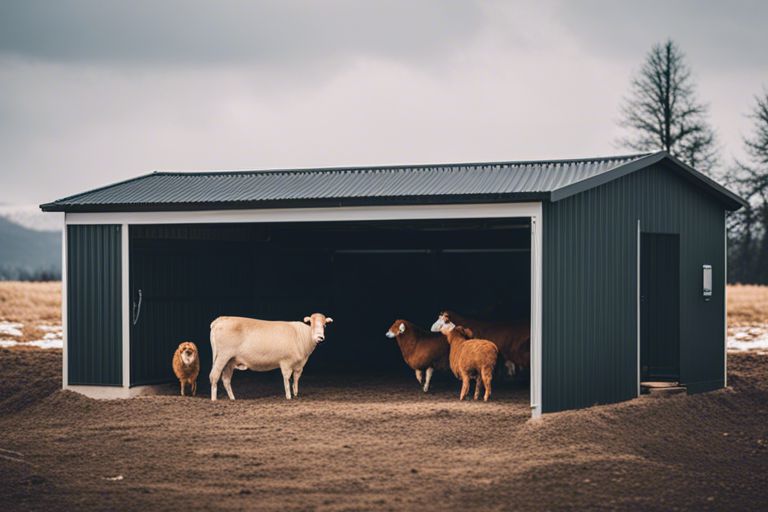
Space and Layout Errors
Failing to Allocate Adequate Space
Errors in the design and construction of livestock shelters often stem from inadequate space allocation. Many farmers underestimate the space required for the animals to move around comfortably and engage in natural behaviors. This can lead to overcrowding, increased stress levels, and even health issues among the livestock.
Ineffective Interior Layout Planning
Errors in interior layout planning can have a significant impact on the functionality and efficiency of a livestock shelter. Poorly designed layouts can make daily chores more challenging, increase the risk of accidents, and hinder ventilation and waste management systems. It is crucial to carefully plan the interior layout to ensure optimal use of space and smooth operations within the shelter.
Understanding the needs and behaviors of the specific livestock species is key to developing an effective interior layout plan. Consider factors such as feeding areas, resting spaces, watering points, and access to exits. Proper zoning of different areas within the shelter can improve workflow, reduce stress on the animals, and facilitate maintenance tasks. Investing time and effort into designing a practical interior layout will pay off in the long run by creating a safer and more efficient environment for both the animals and the handlers.
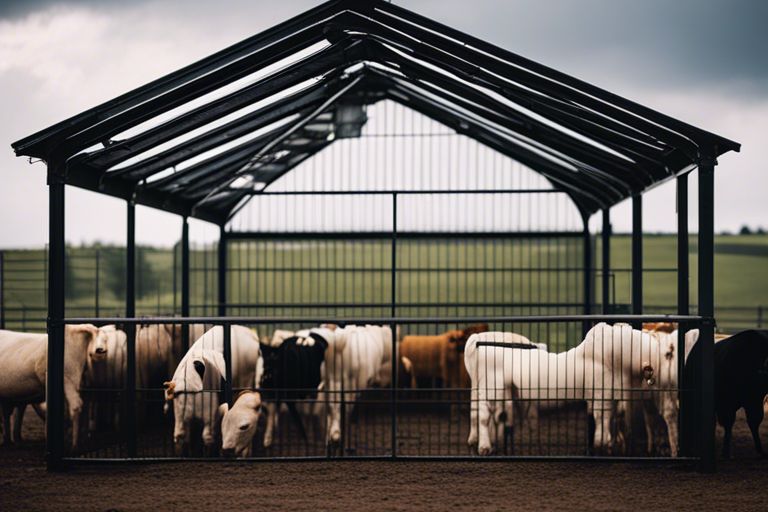
Maintenance and Durability Oversights
Underestimating Ongoing Maintenance Needs
To ensure the longevity and functionality of a livestock shelter, it is important to prioritize ongoing maintenance. Neglecting regular upkeep tasks such as cleaning, inspecting for wear and tear, and repairing any damage can lead to costly and preventable issues down the line. By staying proactive in maintaining the shelter, you can prevent small problems from escalating into larger ones that could compromise the safety and well-being of your livestock.
Disregarding Durability and Longevity Concerns
With a focus on immediate cost savings, many individuals make the mistake of prioritizing price over durability when constructing a livestock shelter. It’s crucial to invest in quality materials and construction methods that are designed to withstand the elements and heavy usage over time. Choosing sturdy materials and ensuring proper construction techniques will pay off in the long run by reducing the need for frequent repairs and replacements.
Another important aspect to consider when it comes to durability and longevity is the structural integrity of the shelter. Factors such as wind resistance, insulation, and overall strength are key components that should not be overlooked. Investing in a well-built shelter that can withstand various weather conditions and provide a safe environment for your livestock will ultimately save you time and money in the long term.
Economic and Budgetary Miscalculations
Overlooking Cost-Effective Solutions
Any livestock shelter construction project requires careful consideration of cost-effective solutions to ensure optimal use of financial resources. One common mistake is overlooking affordable materials or construction methods that could significantly reduce expenses. From selecting durable yet reasonably priced building materials to exploring energy-efficient options for heating and ventilation, there are numerous ways to cut costs without compromising on the quality or functionality of the shelter.
Exceeding Budgetary Constraints Without Planning
Without proper planning, it is easy to fall into the trap of exceeding budget constraints during the construction of a livestock shelter. This can lead to financial strain and potential delays in completing the project. The key is to establish a detailed budget from the outset and continually monitor expenses to ensure they align with the set financial limits. By forecasting potential costs and incorporating a buffer for unexpected expenses, you can avoid the pitfall of overspending and keep the project on track.
The oversight of budgetary considerations in livestock shelter construction can have long-lasting consequences on the overall success and efficiency of the project. By being vigilant in monitoring expenses and exploring cost-effective alternatives, you can ensure a well-constructed shelter that meets both your livestock’s needs and your budget requirements.
Conclusion
So, it is crucial to be aware of the common mistakes to avoid when building a livestock shelter in order to provide a safe and comfortable environment for your animals. By ensuring proper ventilation, adequate space, sturdy construction, and access to food and water, you can prevent unnecessary stress and health issues among your livestock. Paying attention to these details will benefit both the animals and your overall operation in the long run.
FAQ
Q: What are some common mistakes to avoid when building a livestock shelter?
A: When building a livestock shelter, it’s important to avoid mistakes such as poor ventilation, inadequate space, improper drainage, using low-quality materials, lack of insulation, poor orientation, and insufficient protection from predators.
Q: Why is ventilation important in a livestock shelter?
A: Proper ventilation in a livestock shelter is imperative to maintain air quality, regulate temperature, reduce humidity, and prevent the buildup of harmful gases like ammonia. It also helps prevent respiratory issues in animals.
Q: How much space should be provided per animal in a livestock shelter?
A: The amount of space required per animal in a livestock shelter varies depending on the species and size of the animal. Generally, it is recommended to provide 20-50 square feet per animal to ensure they have enough space to move and rest comfortably.
Q: Why is proper drainage important in a livestock shelter?
A: Proper drainage in a livestock shelter is crucial to prevent water accumulation, which can lead to flooding, mud, and bacterial growth. It helps maintain a clean and dry environment for the animals, reducing the risk of diseases and infections.
Q: What type of materials should be used when building a livestock shelter?
A: When building a livestock shelter, it’s important to use durable and weather-resistant materials such as steel, wood, concrete, and UV-resistant plastics. These materials provide strength, insulation, and protection against the elements.
Q: Why is insulation important in a livestock shelter?
A: Insulation in a livestock shelter helps regulate temperature, reduce energy costs, and provide a comfortable environment for the animals. It helps keep the shelter warm in winter and cool in summer, improving overall animal health and productivity.
Q: How can the orientation of a livestock shelter impact its effectiveness?
A: The orientation of a livestock shelter plays a significant role in its effectiveness. It should be positioned to maximize sunlight exposure, minimize wind exposure, and provide good airflow. Proper orientation can improve energy efficiency and create a comfortable environment for the animals.
